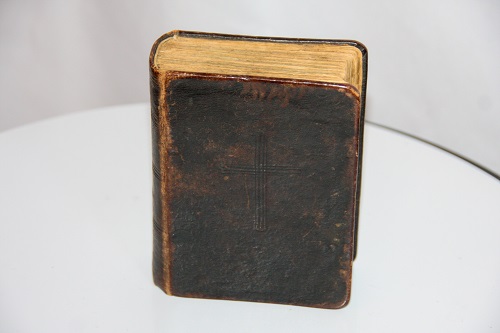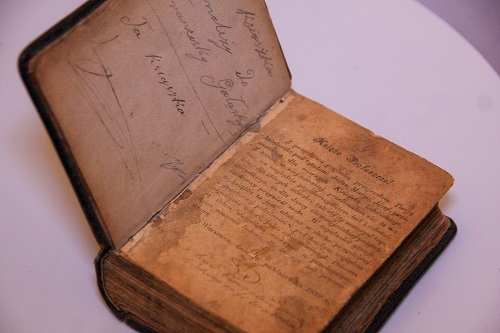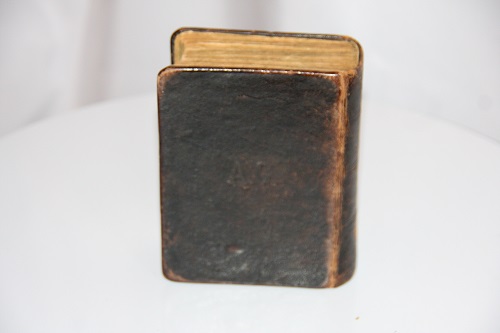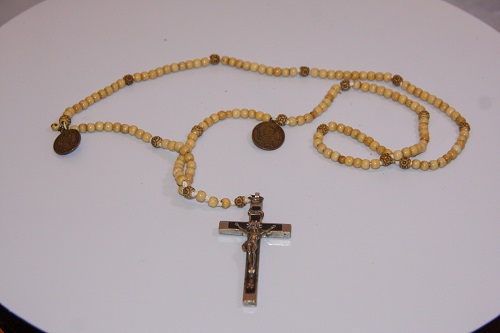These rosary beads along with the copy of the Bible pictured below were donated by an unknown woman. The purpose of rosary beads, which Catholics use to count their prayers, is to remind them of certain principal events or mysteries that recall the lives of Jesus Christ and his mother, the Virgin Mary. In addition to a cross, this set of rosary beads contains medals of St. Dominic and St. Benedict, which indicates that the person who gifted them to the center may have been from the Krakow region in Poland.
This medal depicts St. Dominic of Osma (Spain), founder of the Dominican Order in 1216, who inspired a young nobleman named, Hyacinth, to establish the Dominican Order in Poland. The Basilica of the Holy Trinity in Krakow houses one of the largest Dominican friaries in the world. Krakow, where the Dominicans play an important part to this day, may have been the original home of the woman who owned these rosary beads. According to Catholic tradition, the Blessed Virgin Mary instituted the rosary when she appeared to St. Dominic and gave him a rosary. The flip side of this medal depicts the Virgin Mary and the child Jesus, both holding rosary beads. The inscription reads “Rosarii Sacri Regina” or “Sacred Queen of the Rosary.”
A second medal depicts St. Benedictine, the patron saint of Europe, holding a cross in one hand and his rule book in the other. The reverse side of this medal alludes to Latin prayers associated with St. Benedict. The letters V.R.S.N.S.M.V – S.M.Q.L.I.V.B refer to “Vade Retro, Satana! Nunquam Suade Mihi Vana. Sunt Mala Quae Libas Ipse Venena Bibas,” which translated in English means “Begone, Satan! Suggest not vain things to me. Evil is the cup thou offerest; Drink thou thine own poison.” Many Catholics believe that wearing the Benedictine medal helps to ward off evil. Krakow is also the site of the Benedictine monastery Tyniec, which, according to tradition, was established by Casimir the Restorer, the Duke of Poland who revived the Catholic Church in his homeland in the 11th century.



The first page in inside the cover of this Bible reads (in Polish): “Priest Professor” followed by a long paragraph in Polish. The final words at the end read (in Polish): “Warsaw on October 26, 1899.”
